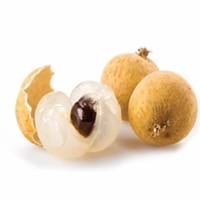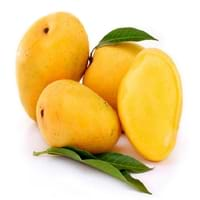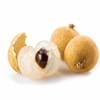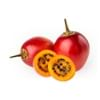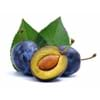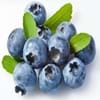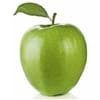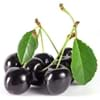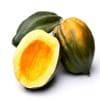Health Benefits
Anti depressant, Anti-inflammatory properties, Healthy mucus membrane, prevents oral cavity cancer, Prevents anemia, Prevents cases of morning sickness, Prevents lung cancer, Skin rejuvenation, Treatment of colonic diseases
Cancer prevention, Cures fatigue, Heart care, Prevents strokes
General Benefits
Anti oxidant properties, Anti-inflammatory properties, Digestive aid, Gives you energy, Suppresses Arthritis
Anti oxidant properties, Boosts immune system, Controls blood pressure, Digestive aid, Improves eye vision, Maintains healthy cholesterol level
Skin Benefits
Reduces wrinkles, Skin rejuvenation
Anti-aging benefits, Brightens and lightens complexion, Skin cleansing, Skin rejuvenation, Treatment of acne, Treatment of blackheads, Treatment of dark spots
Hair Benefits
Not Available
Good conditioner, Prevents hair loss, Treatment of dandruff
Allergy Symptoms
Itching, Swelling of mouth, tongue or lips, Tingling sensation in mouth
Abdominal pains, Breathing difficulty, Diarrhea, Runny nose, Sneezing, Swelling of mouth, tongue or lips, Watery eyes
Side Effects
Mouth irritation, Weight gain
Increase in blood sugar level, Diarrhoea, Weight gain
Best Time to Eat
As a snack in the late afternoon
Don't consume at night and before bed, Eat the fresh ones, avoid mixing with any other foods, don't eat after meal., Morning time (before lunch)
Vitamin B5 (Pantothenic Acid)
Vitamin C (Ascorbic Acid)
Vitamin E (Tocopherole)
Not Available
Vitamin K (Phyllochinone)
Not Available
Lutein+Zeaxanthin
Not Available
Calories in Fresh Fruit with Peel
Not Available
Calories in Fresh Fruit without Peel
Not Available
Calories in Frozen Form
Not Available
Calories in Dried Form
Not Available
Calories in Canned Form
Not Available
Calories in Jam
Not Available
Type
Tree fruit, Tropical
Tree fruit
Season
Mid to late summer
Spring, Summer
Varieties
Chompoo Longan, Kohala Seedling, Haew, Edau and Biew Kiew
Alphonso, Valencia Pride, Badami, Chaunsa, Nam Dok Mai, Glenn, Sindhri, Madame Francique, Kesar and Keitt
Seedless Variety
Not Available
No
Color
Rusty brown
Orange, Red, Yellow
Inside Color
Yellowish brown
Yellow
Origin
Mexico
Southern Asia
Soil Type
Well-drained
Clay, Loam, Sand
Climatic Conditions
Sunny, Warm, Without frosts
Humid, Warm to hot climate
Facts about
- Longan is also called as "Dragon's eye" in China as it gives an impression of an eyeball.
- Longan seeds can be used to absorb the venom after the snake bite and they also help to stop bleeding.
- A mango tree can bear fruits even after the age of 300 years.
- Height of a mango tree can be as high as 100 feet.
- In India, mango is known as a symbol of love. Also, a mango basket is considered as the sign of friendship.
Top Producer
Thailand
India
Other Countries
Australia, Combodia, Taiwan, United States of America, Vietnam
Bangladesh, Brazil, China, Indonesia, Mexico, Nigeria, Pakistan, Philippines, Thailand
Top Importer
China
United States of America
Top Exporter
Thailand
Mexico
Botanical Name
Dimocarpus longan
Mangifera Indica
Synonym
Dragon eye
Not Available
Subkingdom
Viridiplantae
Tracheobionta
Division
Tracheophyta
Magnoliophyta
Class
Magnoliopsida
Magnoliopsida
Order
Sapindales
Sapindales
Family
Sapindaceae
Anacardiaceae
Genus
Dimocarpus
Mangifera
Species
D. longan
M. indica
Generic Group
Not Available
Cashew
Difference Between Longan and Mango
We might think that Longan and Mango are similar with respect to nutritional value and health benefits. But the nutrient content of both fruits is different. Longan and Mango Facts such as their taste, shape, color, and size are also distinct. The difference between Longan and Mango is explained here.
The amount of calories in 100 gm of fresh Longan and Mango with peel is 83.00 kcal and Not Available and the amount of calories without peel is Not Available and 60.00 kcal respectively. Thus, Longan and Mango belong to Low Calorie Fruits and Low Calorie Fruits category.These fruits might or might not differ with respect to their scientific classification. The order of Longan and Mango is Sapindales and Sapindales respectively. Longan belongs to Sapindaceae family and Mango belongs to Anacardiaceae family. Longan belongs to Dimocarpus genus of D. longan species and Mango belongs to Mangifera genus of M. indica species. Beings plants, both fruits belong to Plantae Kingdom.
